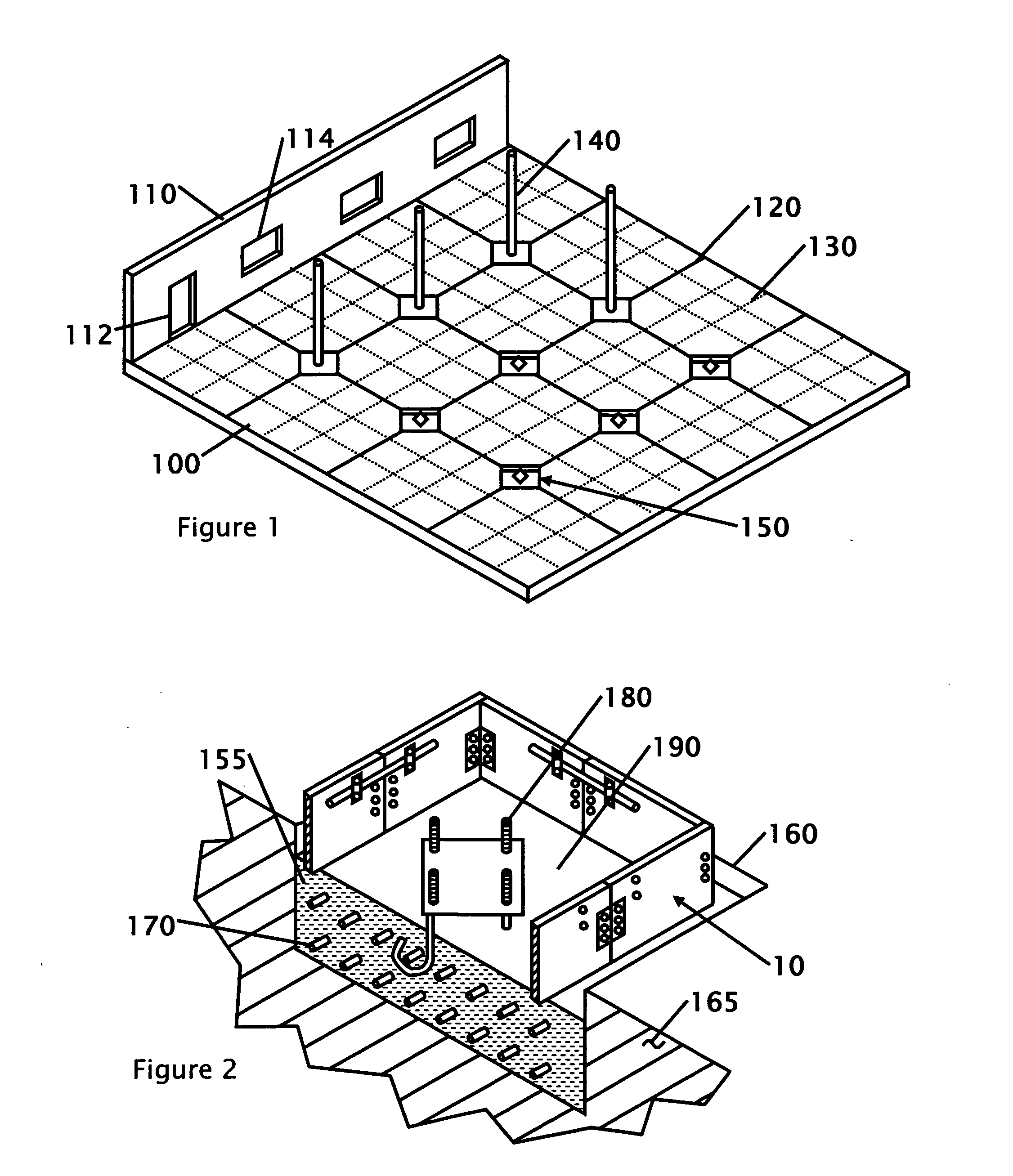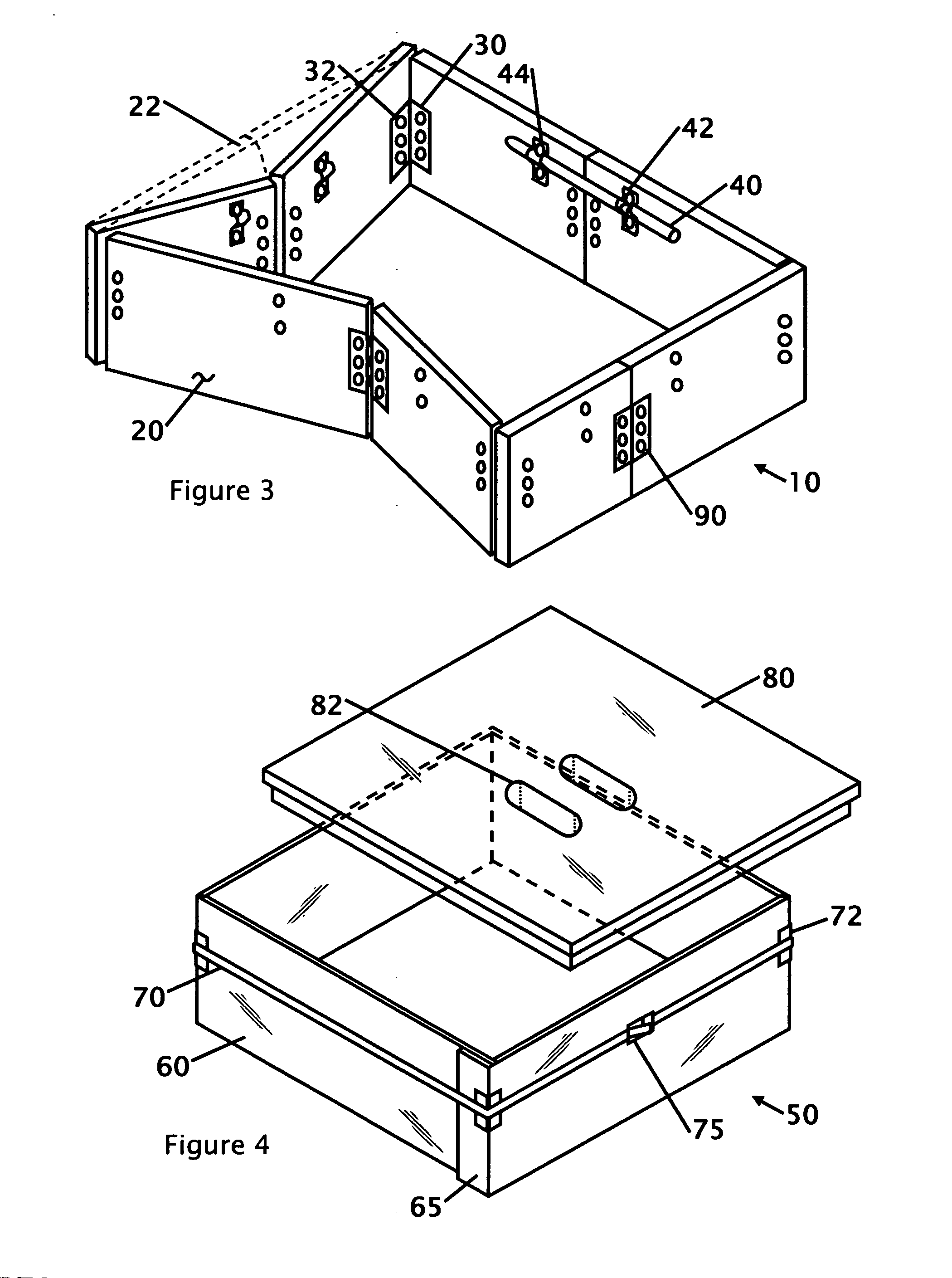Reusable isolation joint form
a concrete form and isolation joint technology, applied in the direction of forms/shuttering/falseworks, shaping building parts, constructions, etc., can solve the problems of sand being removed from inside the form, destroying the cavity of the wooden form, waste in the time it takes to construct, set and fill the form, waste in the time it takes to remove and destroy the form, etc., to achieve the effect of eliminating waste and facilitating the construction of the form
- Summary
- Abstract
- Description
- Claims
- Application Information
AI Technical Summary
Benefits of technology
Problems solved by technology
Method used
Image
Examples
Embodiment Construction
[0023] Referring to FIG. 1 that shows an isometric view of a building construction site showing where the isolation form is used. This figure shows a typical floor 100 with a wall section 110 installed on one side of the floor. Columns 140 are shown inside of the diamond isolation joint pocket 150. The columns 140 support the roof structure or any upper floor sections (not shown). Because of the weight that exists in the roof or upper floors a footing must be poured under the columns to support the weight. The description of the footing and the use of the form for the diamond isolation joint are described in more detail with FIGS. 2-5. Typically the footings that exist under the floor 100 are excavated and poured prior to pouring the floor slab. Due to the separate footing pour under the floor as well as the need for expansion and movement, the concrete at the support columns is poured separately from the footing and the floor, so it can move semi-independently from the floor. The e...
PUM
| Property | Measurement | Unit |
|---|---|---|
| height | aaaaa | aaaaa |
| height | aaaaa | aaaaa |
| depth | aaaaa | aaaaa |
Abstract
Description
Claims
Application Information
 Login to View More
Login to View More - R&D
- Intellectual Property
- Life Sciences
- Materials
- Tech Scout
- Unparalleled Data Quality
- Higher Quality Content
- 60% Fewer Hallucinations
Browse by: Latest US Patents, China's latest patents, Technical Efficacy Thesaurus, Application Domain, Technology Topic, Popular Technical Reports.
© 2025 PatSnap. All rights reserved.Legal|Privacy policy|Modern Slavery Act Transparency Statement|Sitemap|About US| Contact US: help@patsnap.com



